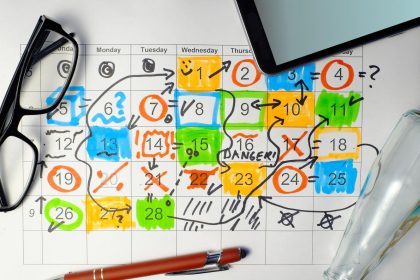This is a published version of our weekly Forbes Tax Breaks newsletter. You can sign-up to get Tax Breaks in your inbox here.
There’s this great line in Randy Travis’ classic song “Is It Still Over?” where he sings, “Since my phone still ain’t ringing, I assume it still ain’t you.”I’ve been feeling that way lately when it comes to the IRS—and the Taxpayer Advocate Service (TAS)—as getting through on the phone lines has been challenging, and return calls can be few and far between. It’s a surprising turn after reports that the IRS had cut phone wait times.
The Treasury Inspector General for Tax Administration (TIGTA) reported in 2023 that, as of September 24, 2022, taxpayers made 148.9 million total attempts and 118.6 million net attempts to contact the IRS by phone. The IRS reports that 29 million calls were answered with automation, and telephone assistors answered 8.8 million calls. That works out to a 14% level of service—down from 2021.
Earlier this year, however, IRS Commissioner Danny Werfel reportedthat the IRS call centers were working at peak efficiency, answering over one million more taxpayer calls than the agency answered a year ago—a 16% increase from 2023—and three million more calls than the IRS answered in 2022. (☆) The IRS reported an 88% level of service on the main phone lines, a five-fold increase from 2022.
So why does it feel like we’ve been going backward in 2024?
I had the opportunity to chat with National Taxpayer Advocate Erin M. Collins about what’s been happening at TAS—including those struggles to get phone calls returned. (☆) She admitted that the past few years have been “difficult”—especially following processing issues at the IRS during the pandemic. However, she says changes are coming—notably, TAS is hiring and training new employees, and there’s a letter re-design in the works. As for those phone call logjams? Collins said they’re working on that, too.
(Minutes after I posted my article, TIGTA released a report on TAS telephone lines. You can find it here.)
Another topic that dominated headlines earlier in the year that’s made news recently is the child tax credit bill. More than six months after the House passed a bill that would restore bonus depreciation, end the Employee Retention Credit (ERC) early, and expand the Child Tax Credit (CTC), the Senate finally held a vote. The result? The bill failed to advance with a vote along party lines. (☆)
(You may recall that earlier in the year, I wasn’t convinced that the bill would become law.)
There will be a lot of talk about tax proposals and policy as we get closer to the election. And while this newsletter is tax-focused, not politics-focused, it’s nearly impossible to talk about one without the other—following is a quick look at some tax policy items making news.
As noted earlier, former President and now GOP presidential candidate Donald Trump has proposed eliminating the tax on tips. There are two proposed bills to amend the Internal Revenue Code to make tips more or less tax free: the “No Tax on Tips Act,” the Senate bill introduced by Ted Cruz (R-Texas) and the “Tax Free Tips Act of 2024,” the House bill by Thomas Massie (R-Ky) and Matt Gaetz (R-Fla.). Neither proposal is expected to move forward.
(You can read about the digital path to collect more of the taxes owed on tip income here.)
Another Trump proposal would eliminate taxes on Social Security benefits. Currently, the proceeds from taxing Social Security benefits play a crucial role in bolstering the financial stability of the Social Security program and Medicare. Eliminating the tax would cost nearly $1 trillion over the next decade, making the proposal unlikely to advance.
(You can read more about the taxation of Social Security benefits here. (☆))
Trump has also promised to use higher tariffs to protect jobs—continuing a pledge from his earlier tenure. If you’re not quite sure what a tariff is—or why it matters—take a listen to this brief history of tariffs in the U.S., starting with the first tariff law back in 1789. (Transcript available.)
Presumptive Democratic presidential nominee Kamala Harris has not yet released her tax agenda. But her record as a U.S. senator and her 2020 presidential candidacy show that she has strongly supported using the tax code to advance social and economic ends.
Harris has repeated President Biden’s pledge not to raise taxes on anyone making under $400,000 a year. In 2020, the Tax Foundation said the $400,000 figure should be adjusted for inflation. The think tank also ran an analysis of where Harris stands on taxes, based in large part on her 2020 candidacy.
Finally, Harris’ team has also released 20 years of personal tax returns, stretching back to the earliest days of her political career.
One more policy mention—but with a twist. This year marks the anniversary of the Equal Credit Opportunity Act, making it illegal for lenders to require that women have a male cosigner when applying for credit cards, mortgages, or bank accounts. Even though it feels like that was eons ago, it happened within the lifetimes of the 2024 Forbes Women 50 Over 50 listees. If you haven’t checked out the fourth annual 50 Over 50 list—do click over. Among those on the list is Olympic gold medalist (and Philly’s own) Dawn Staley—she’s currently in Paris cheering on our athletes.
Enjoy the rest of the Games!
Kelly Phillips Erb (Senior Writer, Tax)
Articles marked with (☆) are premium content and require you to log-in with your Forbes membership credentials. Not a subscriber yet? Click here to sign up.
Taxes From A To Z: J Is For Joint Returns
Your marital status is determined as of the last day of the tax year—December 31—according to state law. If you’re married on that day, you’re married. It’s not more complicated than that.
If you are married, you generally have two choices: married filing jointly (MFJ) or married filing separately (MFS).
Most married couples file jointly. For the tax year 2021, the last year for which complete data is available from the IRS, 54,248,325 taxpayers filed jointly, representing about one-third of all returns filed. That same year, just over 2% of taxpayers filed married filing separately.
If you are married and choose to file as married filing separately, you will usually pay more tax. That’s because if you file as married filing separately, you lose the opportunity to claim some tax preference items. For example, you typically cannot take the student loan interest deduction, education credits, or the earned income credit if you file MFS.
Once you’ve filed MFJ, you cannot amend your return to MFS, though you can file a superseded return before the deadline. The opposite, however, does work: you can amend MFS returns to file as MFJ.
For most married taxpayers filing jointly, the requirement to file a tax return kicked in when your gross income hit $27,700 for the 2023 tax year (it’s slightly higher for taxpayers 65 or older). But the gross income to require you to file a tax return if you’re MFS? Just $5.
Statistics
Pennsylvania has joined the list of states that will participate in the IRS Direct File program in 2025. (☆) The Keystone State will join Oregon and New Jersey, which an IRS spokesman confirmed have been added to the 12 states from 2023 (Arizona, California, Florida, Massachusetts, Nevada, New Hampshire, New York, South Dakota, Tennessee, Texas, Washington, and Wyoming).
Direct File—a free direct e-file tax return system—isn’t the only IRS project paid for by the Inflation Reduction Act.
“Funding from the Inflation Reduction Act is helping spur innovation and improvement across the IRS to transform our operations in our work to help taxpayers and the nation,” said IRS Commissioner Danny Werfel. “This progress can be seen in our continued expansion of our online accounts to provide more features, increased use of new digital tools and additional special activities to help taxpayers in-person. By providing digital forms, making payments easier and continuing work to reduce paper-based processes that have long hampered the IRS and frustrated taxpayers, our progress is accelerating to make long-overdue improvements.”
Questions
Sometimes, a tax question can touch on a few different tax issues. That’s exactly what happened this week, when a reader asked:
My question is in regard to cryptocurrency. If I were to take crypto, and convert it to cash in my bank, can I take a portion of those cash profits and give them to my wife as a tax-free gift?
First, a quick refresher on the taxation of cryptocurrency. (☆) The IRS considers crypto a capital asset. That means if you buy and sell cryptocurrency as an investment (that includes converting it to cash), you’ll calculate gains and losses the same way you buy and sell stock. If you treat cryptocurrency like cash—spending it directly for goods or services or using it to buy other digital assets—the individual transactions may result in a gain or a loss. Those gains or losses must be reported on your federal income tax return.
(You may also be subject to tax on other crypto transactions, like mining and staking, but that’s beyond the scope of this question.)
If you’re married, you may opt to file a joint return in which case, your wife is jointly responsible for the tax due.
Making a gift won’t result in income tax consequences, but may, as you noted, have a gift tax result. That’s because there’s a federal gift tax on the transfer of property when you receiving nothing, or less than full value, in return. You can read more about the gift tax here.
Exclusions apply. The federal gift tax exclusion is $18,000 in 2024. (☆) That means you can give $18,000 per person with no federal gift tax consequences in 2024.
The rules for spouses are a little different. You can make unlimited gifts to your spouse if your spouse is a U.S. citizen—in other words, those are gift-tax free. However, if your spouse is not a U.S. citizen, you can often gift up to $185,000 in 2024 without being subject to gift tax (it was $175,000 in 2023).
—
Do you have a tax question or matter that you think we should cover in the next newsletter? We’d love to help if we can. Check out our guidelines and submit a question here.
A Deeper Dive
Over the past five years, conservation easement deductions have been in the spotlight due to Congress restricting syndicated conservation easement deductions. One such case that attracted interest was Townley v. United States. Tony D. Townley, cofounder of Zaxby’s, and his wife, Elizabeth A. Townley, sued for a tax refund of $43 million based on charitable deductions for conservation easements valued at $166 million. Gravel was discovered on the land—Townley appraisers argue that gravel mining is the highest and best use, so they are valuing the property, in part, by taking the discounted cash flow from mining for the next twenty years. The appraisers for the government did not agree that the gravel mines are economically feasible.
This case was set for a jury trial, but the parties reached a settlement. Why would the IRS settle when they’ve been on a roll in these kinds of cases? Some quirks—like those mineral rights—made this a more difficult case for the government. And, a public blow would largely discourage conservation easement investors from accepting the latest settlement offer from the IRS.
Tax Filings And Deadlines
📅 September 16, 2024. Third quarter estimated payments due for individuals and corporations.
📅 September 16, 2024. Due date for 2023 calendar year partnership returns (Forms 1065) and S corporations (Forms 1120-S) filed on extension.
📅 February 3, 2025. Due date for individuals and businesses in parts of Texas affected by Hurricane Beryl. More info here. (☆)
Tax Conferences And Events
📅 July-September, 2024. IRS has announced the continuing education (CE) agenda for the 2024 Nationwide Tax Forum. Attendees can earn up to 19 CE credits over three days by attending one of the forums in Baltimore (August 13-15), Dallas (August 20-22), or San Diego (September 10-12). Registration required.
📅 August 4-7, 2024. 2024 Federation of Tax Administrators Technology Conference and Expo, Hilton Milwaukee and Baird Center, Milwaukee, WI. Registration required.
📅 September 23-27, 2024. ABA Section of Taxation Virtual 2024 Fall Tax Meeting. Registration required.
Trivia
The telephone excise tax generated $5.2 billion in budget receipts for fiscal year 1999. How much did it raise in 2022?
A. $321 million
B. $3.21 billion
C. $32.1 billion
D. $321 billion
Find the answer at the bottom of this newsletter.
Positions And Guidance
The American Institute of CPAs (AICPA) has provided recommendations to the IRS focused on the domestic content bonus credit (DCBC) requirements. Per the interim guidance from the IRS, to qualify for the DCBC, customers must know the exact amount of the manufactured product and components costs and which components are domestically produced. This requirement, says the AICPA, has caused significant pressure on taxpayers who need the DCBC to make the economics of an energy project viable.
Noteworthy
The American Bar Association Section of Tax welcomes its new chair, Alice Abreu, who will replace the immediate past chair, Scott Michel. Abreu is the Honorable Nelson A. Diaz Professor of Law and the Director of the Center for Tax Law and Public Policy at Temple University School of Law in Philadelphia, PA (she also happened to teach this particular tax lawyer).
CBIZ, Inc., a national provider of financial, insurance, and advisory services, announced that it will acquire the non-attest business of Marcum, LLP. The transaction will make CBIZ the seventh-largest accounting services provider in the U.S., with approximately $2.8 billion in annual revenue.
Rillet, an automated platform built by accountants for accountants, announced that it has raised $13.5 million led by First Round Capital (Uber, Square, Notion, Looker), Creandum (Spotify, Klarna), and Susa Ventures (Robinhood) with participation from individual investors.
Kilpatrick announced that James “Jamie” Null has joined the firm’s New York office as a partner. Null will be a member of the transactional tax team in the firm’s corporate, finance, and real estate department. He was previously a partner at Loeb & Loeb LLP.
—
If you have career or industry news, submit it for consideration here or email me directly.
In Case You Missed It
Here’s what readers clicked through most often last week:
→ Best Places To Retire In 2024: Las Cruces And Other Unexpected Hot Spots
→ IRS Reveals What It Looks For In Stock Option Audits
You can find the entire newsletter here.
Trivia Answer
The answer is (A) $321 million.
The federal telephone excise tax was first enacted by the War Revenue Act of 1898. Intended to fund the Spanish-American War, it was designed as a luxury tax on those who owned telephones.
Today, the 3% telephone excise tax is collected from the customer by telephone companies and then passed on to the IRS. It only applies to local service billed separately from long-distance service. That means that many services, like mobile contracts that bundle local and long-distance services, are exempt, which explains the significant decline in collections.
Feedback
How did we do? We’d love your feedback. If you have a suggestion for making the newsletter better, let us know.
Read the full article here





